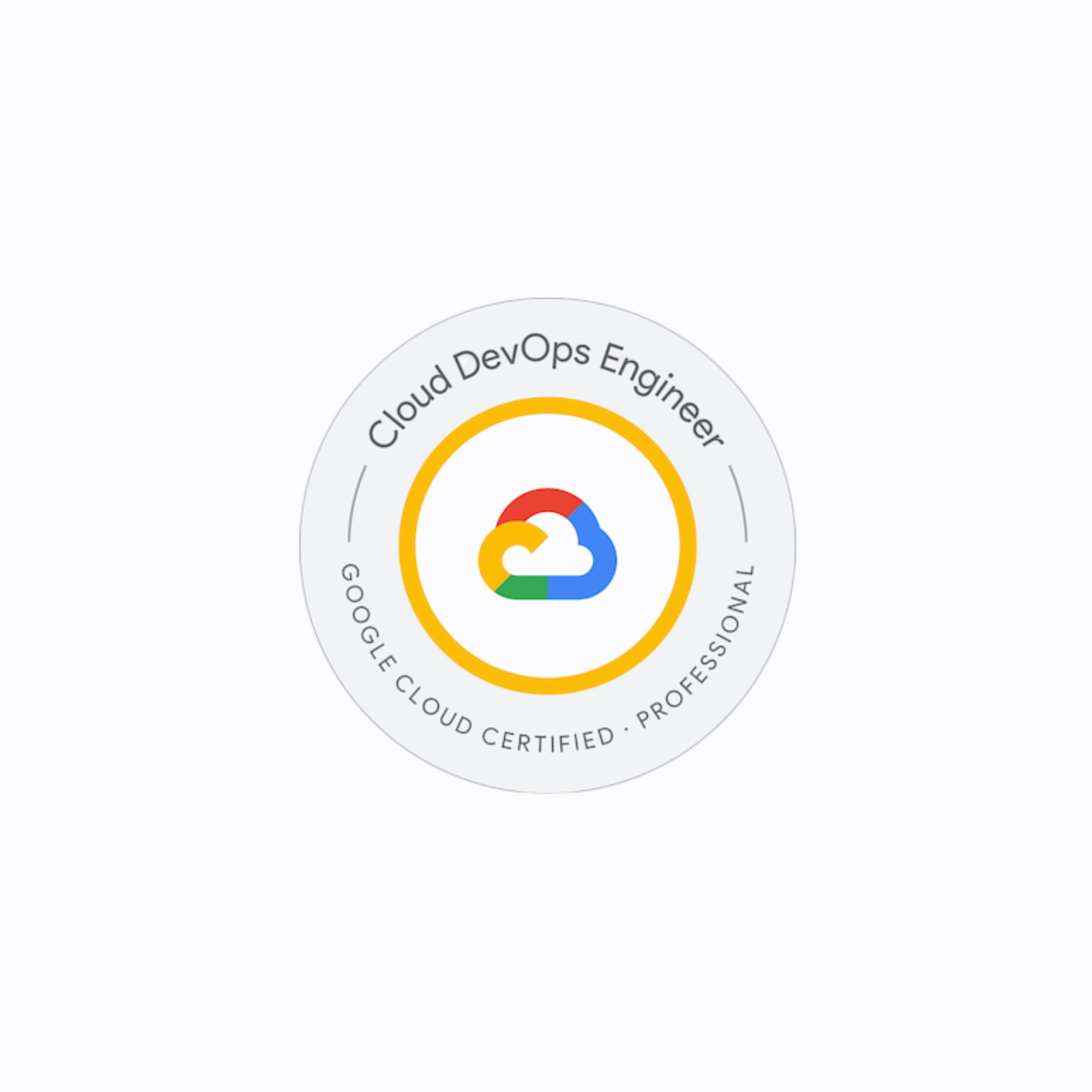
About Course
Google Cloud Certified Professional Cloud DevOps Engineer Course Overview
Section 1: Bootstrapping and maintaining a Google Cloud organization (~15% of the exam)
1.1 Designing the overall resource hierarchy for an organization. Considerations include:
● Projects and folders
● Shared networking
● Multi-project monitoring and logging
● Identity and Access Management (IAM) roles and organization-level policies
● Creating and managing service accounts
● Organizing resources by using an application-centric approach (e.g., App Hub)
1.2 Managing infrastructure. Considerations include:
● Infrastructure-as-code tooling (e.g., Cloud Foundation Toolkit, Config Connector, Terraform, Helm)
● Making infrastructure changes using Google-recommended practices and blueprints
● Automation with scripting (e.g., Python, Go)
1.3 Designing a CI/CD architecture stack in Google Cloud, hybrid, and multi-cloud environments. Considerations include:
● Continuous integration (CI) with Cloud Build
● Continuous delivery (CD) with Cloud Deploy, including Kustomize and Skaffold
● Widely used third-party tooling (e.g., Jenkins, Git, Argo CD, Packer)
● Security of CI/CD tooling
1.4 Managing multiple environments (e.g., staging, production). Considerations include:
● Determining the number of environments and their purpose
● Managing ephemeral environments
● Configuration and policy management
● Managing Google Kubernetes Engine (GKE) clusters across an enterprise
● Safe and secure patching and upgrading practices
1.5 Enabling secure cloud development environments. Considerations include:
● Configuring and managing cloud development environments (e.g., Cloud Workstations, Cloud Shell)
● Bootstrapping environments with required tooling (e.g., custom images, IDE, Cloud SDK)
● Leveraging AI to assist with development and operations (e.g., Cloud Code, Gemini Code Assist)
Section 2: Building and implementing CI/CD pipelines for applications and infrastructure (~27% of the exam)
2.1 Designing and managing CI/CD pipelines. Considerations include:
● Artifact management with Artifact Registry
● Deployment to hybrid and multi-cloud environments (e.g., GKE Enterprise)
● CI/CD pipeline triggers
● Testing a new application version in the pipeline
● Configuring deployment processes (e.g., approval flows)
● CI/CD of serverless applications
● Applying CI/CD practices to infrastructure (e.g., GKE clusters, managed instance groups, Cloud Service Mesh configuration)
2.2 Implementing CI/CD pipelines. Considerations include:
● Auditing and tracking deployments (e.g., Artifact Registry, Cloud Build, Cloud Deploy, Cloud Audit Logs)
● Deployment strategies (e.g., canary, blue/green, rolling, traffic splitting)
● Troubleshooting and mitigating deployment issues
2.3 Managing CI/CD configuration and secrets. Considerations include:
● Key management (e.g., Cloud Key Management Service)
● Secret management (e.g., Secret Manager, Certificate Manager)
● Build versus runtime secret injection
2.4 Securing the CI/CD deployment pipeline. Considerations include:
● Vulnerability analysis with Artifact Registry
● Software supply chain security (e.g., Binary Authorization, Supply-chain Levels for Software Artifacts [SLSA] framework)
● IAM policies based on environment
Section 3: Applying site reliability engineering practices to applications (~23% of the exam)
3.1 Balancing change, velocity, and reliability of the service. Considerations include:
● Defining SLIs (e.g., availability, latency), SLOs, and SLAs
● Error budgets
● Opportunity cost of risk and reliability (e.g., number of “nines”)
3.2 Managing service lifecycle. Considerations include:
● Service management (e.g., introduction of a new service by using a pre-service onboarding checklist, launch plan, or deployment plan, deployment, maintenance, and retirement)
● Capacity planning (e.g., quotas, limits)
● Autoscaling (e.g., managed instance groups, Cloud Run, GKE)
3.3 Mitigating incident impact on users. Considerations include:
● Draining/redirecting traffic
● Adding capacity
● Rollback strategies
Section 4: Implementing observability practices (~20% of the exam)
4.1 Managing logs. Considerations include:
● Collecting and importing logs (e.g., Cloud Logging agent, Cloud Audit Logs, VPC Flow Logs, Cloud Service Mesh)
● Logging optimization (e.g., filtering, sampling, exclusions, cost, source considerations)
● Exporting logs (e.g., BigQuery, Pub/Sub, for auditing)
● Retaining logs
● Analyzing logs
● Handling sensitive data (e.g., personally identifiable information [PII], protected health information [PHI])
4.2 Managing metrics. Considerations include:
● Collecting and analyzing metrics (e.g., application, platform, networking, Cloud Service Mesh, Google Cloud Managed Service for Prometheus, hybrid/multi-cloud)
● Creating custom metrics from logs
● Using Metrics Explorer for ad hoc metric analysis
● Creating synthetic monitors
4.3 Managing dashboards and alerts. Considerations include:
● Managing dashboards (e.g., creating, filtering, sharing, playbooks)
● Configuring alerting and alerting policies (e.g., SLIs, SLOs, cost control)
● Widely used third-party alerting tools
Section 5: Optimizing performance and troubleshooting (~15% of the exam)
5.1 Troubleshooting issues. Considerations include:
● Infrastructure issues
● Application issues
● CI/CD pipeline issues
● Observability issues
● Performance and latency issues
5.2 Implementing debugging tools in Google Cloud. Considerations include:
● Application instrumentation
● Cloud Trace
● Error Reporting
5.3 Optimizing resource utilization and costs. Considerations include:
● Observability costs
● Spot virtual machines (VMs)
● Infrastructure cost planning (e.g., committed-use discounts, sustained-use discounts, network tiers)
● Google Cloud recommenders (e.g., cost, security, performance, manageability, reliability)
Student Ratings & Reviews

